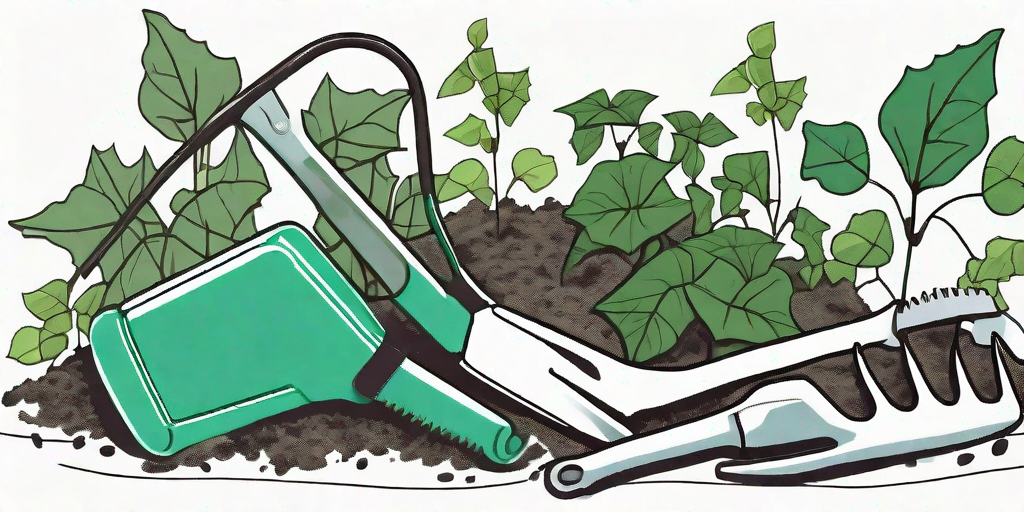
Ivy, a plant that's as tenacious as a toddler refusing to go to bed, can be a real pain in the garden. It's like that guest who overstays their welcome and then refuses to leave. But fear not, dear reader, for we have the solution. This guide will equip you with the knowledge and tools needed to bid adieu to this stubborn green invader.
Understanding the Ivy
Before we dive into the nitty-gritty of ivy eradication, let's take a moment to understand our leafy adversary. Ivy, with its glossy leaves and vigorous growth, can seem like a charming addition to your garden. However, beneath this green facade lies a plant with a knack for survival that would put Bear Grylls to shame.
Ivy is an evergreen plant that can easily climb and cover walls, trees, and the ground. It's a master of disguise, often hiding in plain sight, and before you know it, your garden has been taken hostage by this green guerrilla.
Why Ivy Needs to Go
Now, you might be wondering, "Why should I bother? Isn't ivy just another plant?" Well, dear reader, ivy is to plants what Godzilla is to lizards. Let's explore why.
Firstly, ivy's rapid growth can smother other plants and trees, depriving them of sunlight. Secondly, the weight of ivy can cause structural damage to walls and fences. Lastly, ivy can harbor pests like rats and insects, turning your garden into a creepy-crawly convention.
The Battle Plan: How to Eradicate Ivy
Now that we've identified the enemy and understood its tactics, it's time to launch our counterattack. Here's a step-by-step guide to reclaiming your garden from the clutches of ivy.
Step 1: Suit Up
Before you go charging into battle, make sure you're properly equipped. You'll need gardening gloves to protect your hands, pruning shears to cut the ivy, and a garden fork to loosen the soil. Remember, safety first!
Step 2: Cut and Pull
Start by cutting the ivy at the base of the plant. Once you've severed the main stem, start pulling out the ivy. Be patient, this can be a bit like untangling a particularly knotty piece of string.
Step 3: Dig Out the Roots
With the ivy removed, it's time to dig out the roots. Use your garden fork to loosen the soil and then pull out the roots. Be thorough, as any remaining roots can lead to a resurgence of the ivy.
Post-Battle Clean-Up
With the ivy vanquished, it's time for the clean-up. Dispose of the ivy properly, as it can regrow from cuttings. Consider using a garden waste bin or composting it.
After removing the ivy, check your garden for any damage. You might need to repair fences or walls, or replant areas where the ivy has smothered other plants.
Preventing Ivy's Return
Victory is sweet, but the war isn't over yet. Ivy is a crafty opponent and can return if you're not vigilant. Here are some tips to keep your garden ivy-free.
- Regularly check your garden for any signs of ivy.
- Keep your garden clean and tidy. A well-maintained garden is less inviting to ivy.
- Consider planting ivy-resistant plants. These can help deter ivy from taking root.
FAQs
- Is ivy harmful to trees?
- Yes, ivy can harm trees by blocking sunlight and adding extra weight, which can cause trees to topple.
- Can ivy damage buildings?
- Yes, ivy can cause damage to buildings by growing into cracks and crevices, causing structural damage.
- Is all ivy bad?
- No, not all ivy is bad. Some types of ivy, like English ivy, can be invasive, but others can be beneficial for wildlife and can be controlled with regular maintenance.
So there you have it, a comprehensive guide to saying goodbye to ivy. Remember, the key is persistence and regular maintenance. Happy gardening!















